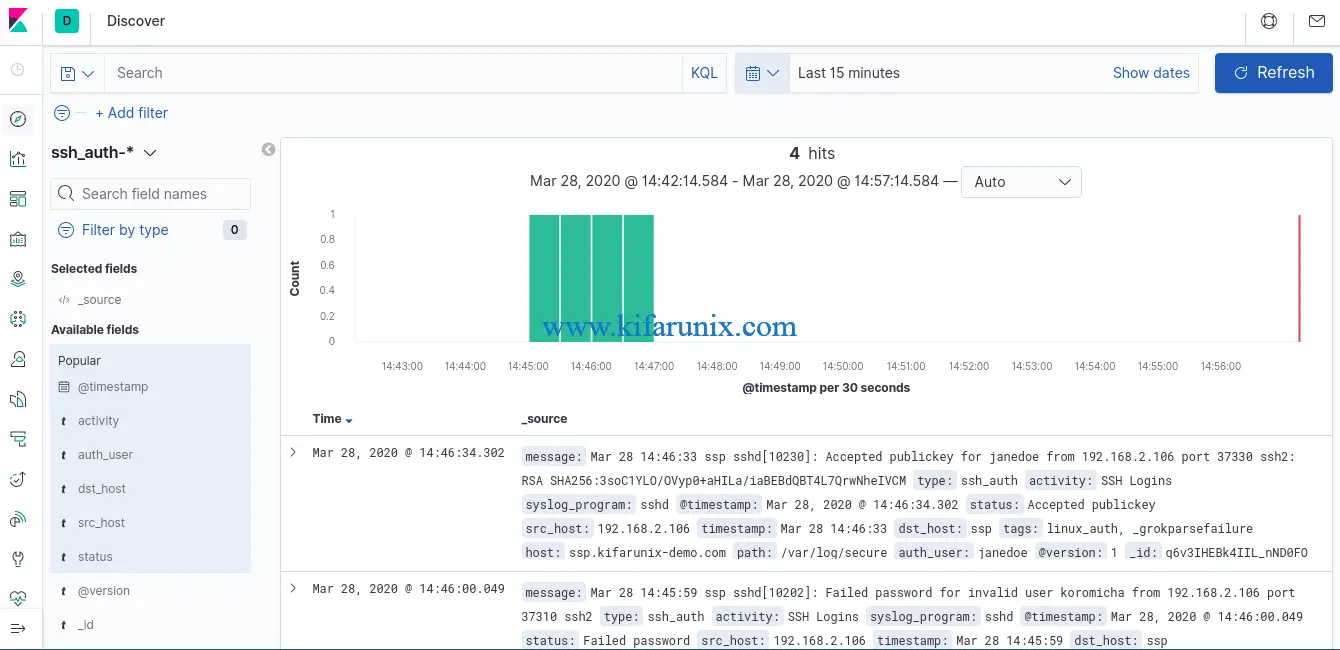

We will install and configure logstash which will collect the logs from filebeat and then it will transform the logs and sent it to elasticsearch. Now We have successfully installed and configure kibana and nginx reverse proxy for the Kibana Dashboard. sudo systemctl start nginx sudo systemctl enable nginx Start the nginx service and enable the service to start on the system boot. Nginx: configuration file /etc/nginx/nf test is successful nginx: the configuration file /etc/nginx/nf syntax is ok
ELK STACK INSTALL CENTOS PASSWORD
Provide the password for the elastic user and confirm the password for authentication. sudo htpasswd -c /etc/nginx/.kibana-user elastic Use the below commands to create basic authentication. Next We have to setup a basic authentication for the Kibana dashboard. In the server_name You should replace with your domain name. sudo cd /etc/nginx/conf.d sudo vi nfĪnd paste the below nginx configuration in the kibana virtual host file.Īuth_basic_user_file /etc/nginx/.kibana-user yum install epel-release -y sudo yum install nginx -yĪfter the nginx is installed, Go to /etc/nginx/conf.d folder and then create a virtual host file named “nf”. Lets Install Nginx package to the system. In this step We will configure Nginx web server as a reverse proxy for the kibana dashboard. Now that we have successfully installed and configure Kibana dashboard which is running on default port 5601 and listening on any host. To check the status of the kibana service sudo systemctl status kibana To enable the service to start on the system boot. To start the kibana service, sudo systemctl start kibana server.port: 5601ĥ601 is the port in which kibana runs. To edit the kibana configuration file, Go to /etc/kibana folder and open kibana.yml file. Run the below command to enable the elasticsearch repository. Uncomment the network.host and change the value to localhost.By doing this, elasticsearch port will listen only to localhost.Īs we have already added the repository, It comes with the kibana package. Once the installation is completed, Go the /etc/elasticsearch folder and configure the elasticsearch on elasticsearch.yml sudo yum install -enablerepo=elasticsearch elasticsearch

Save and Close the file, Now we are ready to use the repository to install the elasticsearch packages.Įlasticsearch can be installed using the below command. Name=Elasticsearch repository for 7.x packages vi elasticsearch.repoĪnd add the below contents to the file. To add elasticsearch repository, We need to create a file named elasticsearch.repo in the /etc// folder. Import the Elasticsearch PGP key to the system using the below command, rpm -import java -versionĪdding ELK stack repository to the system, Now that we have installed java on the system.To verify the version and installation of Java use the below command. To install Java 8 use the below commands. In this setup we will install and configure Elasticsearch on Centos 7.īut before installing the Elasticsearch, We need to install JAVA on the system, As the elasticsearch requires Java. The indexes stored in the Elasticsearch will be used by Kibana and it will be represented to the user in the form of Barcharts, Graphs etc.


 0 kommentar(er)
0 kommentar(er)
